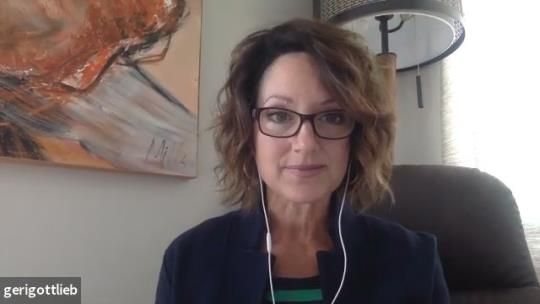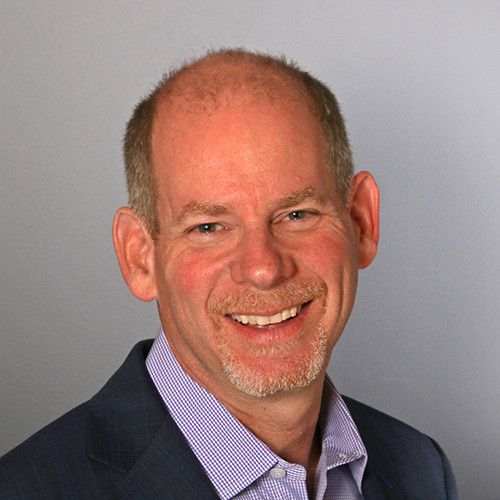Case acceptance for complete dentistry in the COVID-19 era
Write your awesome label here.
DOT SHARECAST WITH DR. PAUL HOMOLY, CSP
Let’s talk about dentist communication and the importance of complete care. I am very excited to share the latest DOT SHARECAST with Dr. Paul Homoly! Dr. Homoly has been helping dentists with case acceptance for complete dentistry for many years and I encourage you to watch the full episode above.
Here is a summary of what we talked about.
What is Complete Dentistry?
Write your awesome label here.
Many young dentists want to fix their patients’ teeth. They want to solve tangible problems and be done with it. But that isn’t complete dentistry.
Complete dentistry focuses on the big picture. It communicates the full scope of the situation, gives the patient options, and allows them to make decisions accordingly.
By definition, complete care is the minimum amount of dentistry required to restore patients to optimal function, aesthetics, phonetics, and in the last 10 years, airway.
We’ll dive into the details shortly. For the time being, it’s important to note that the evolution from tooth dentistry to complete dentistry lies in the dentist’s behavioral skills.
Focus on How the Patient Feels
In dental school, one might argue there isn’t enough emphasis on practicing empathy. Experts may touch briefly on the benefits of active listening. However, dentists early in their career tend to focus more on the technical side of things. But we need to hone in on we are influencing the patient. We need to think about how the patient feels, and reassure the patient they will be well cared for.
How I am doing this in COVID-19 era?
How I am doing this in COVID-19 era?
- Making eye contact
- Telling stories
- Smiling (mask-free in a telehealth consult)
Stop Trying to Educate the Patient
To be a leader, you need to speak like one. You need to act like one. And by doing so, you can build a strong connection with your patients—all by focusing on how they feel.
Some dentists think they can instill confidence by sharing all their knowledge. Trying to impress the patient with how much you know many times will only make them feel uneasy. It’s important instead to take the time to understand why the patient wants their teeth fixed.
Some dentists think they can instill confidence by sharing all their knowledge. Trying to impress the patient with how much you know many times will only make them feel uneasy. It’s important instead to take the time to understand why the patient wants their teeth fixed.

Read also: The Top Mistakes Young Dentists Make
We are trained to use complex dental vernacular, and to educate patients into doing treatment rather than trying to understand the patient’s goals. No matter your industry, getting to know the person you’re talking to is key.
In the latest DOT SHACAST, Dr. Paul Homoly shares the way many dentists approach their patients and gives the listeners an alternative that drastically increase the patient’s comfort level.
How NOT to approach the patient: “Now that I’m looking at your X-rays, I can see you have what we call periodontal pocketing. When the hygienist was doing your exam, you probably heard numbers like four, five, and six—and any number over two means you have inflammation.”
How to approach the patient: “Well, I understand you’re not happy with the appearance of your front teeth—but before we start talking about how to fix it, tell me something. It’s been a while since you’ve been to the dentist. What’s going now that makes you want to address your front teeth?”
It might be a child’s wedding, or another important event in the patient’s life. And by engaging the patient in this way, the dentist can build a stronger connection, share their own stories, and reveal who they are beyond their professional role.
The conversation will flow naturally and promote comfort. These conversations—by asking the right questions and listening—will help the dentist understand what the patient wants to do, along with the when and the why. This is all crucial to providing complete care.
Leadership Best Practices
Within and outside of dentistry, it may be worth looking into what leaders are doing right. How can stakeholders in any field build trust with their followers?
1. Leaders must help set the destination.
For example, a dentist might make it personal and say, “We’re going to make it so that the next time you’re with your family, you won’t be worried about your jaw.”
2. Leaders should provide resources for reaching that destination.
A dental leader might say, “I want you to know that dentistry of this nature is complex and time-consuming. I can assure you you’ll be safe and comfortable throughout.”
3. Leaders must give listeners the confidence to advance in their best interests.
It’s the confidence piece that’s far too often missing. Avoid giving the patient too much technical information, and instead speak to them in an open and friendly way.
1. Leaders must help set the destination.
For example, a dentist might make it personal and say, “We’re going to make it so that the next time you’re with your family, you won’t be worried about your jaw.”
2. Leaders should provide resources for reaching that destination.
A dental leader might say, “I want you to know that dentistry of this nature is complex and time-consuming. I can assure you you’ll be safe and comfortable throughout.”
3. Leaders must give listeners the confidence to advance in their best interests.
It’s the confidence piece that’s far too often missing. Avoid giving the patient too much technical information, and instead speak to them in an open and friendly way.
It may sound simple—but over 70% of dentists surveyed by Dr. Homoly admitted they aren’t providing complete care.
They may be afraid of overwhelming the patient or of losing them to sticker shock. They may be worried about how to respond if the patient says no to treatment.
Yet, not offering complete dentistry presents an ethical violation. And it’s especially paramount to provide it as we move through the coronavirus pandemic.

Read also: Defining Your Practice Culture
Complete Dentistry in the Context of COVID-19
These are complex times we’re living in. Yet complete care doesn’t necessarily mean complex care. It’s up to the patient to decide what they want. Sometimes, getting their teeth fixed might not be the next best step in the person’s life. It might instead be saving money, getting sober, losing weight, or tackling another goal.
There are so many reasons why people who want care might not get it—and it has nothing to do with a lack of understanding.
There are so many reasons why people who want care might not get it—and it has nothing to do with a lack of understanding.

Read also: The Times, They are a Changin’
Complete care isn’t something dentists should sell. The patient should be made aware of their options and move forward of their own will, rather than being manipulated into making a decision. The idea is to help patients advance in the direction of their own best interests.
The idea is to help patients advance in the direction of their own best interests.
With the pandemic in mind, we know that dentists aren’t presenting complete care to the extent that they should. And now more than ever, we know there is strong evidence that oral conditions can exacerbate systemic conditions. This makes complete dentistry all the more important.
How can dentists address this? By presenting everything they see to the patient. By making a full list of the conditions they find—and by acknowledging that there may be some conditions the patient might not want to treat. So the patient can expect a very thorough exam, but this is simply the new standard of care the dentist is following.
And for dentists who have a hard time slowing down and listening—there’s no better time than now to do just that. For more information, watch to Dr. Hartlieb’s full conversation with Dr. Homoly.
Exclusive Offer - Are Interested in a free consultation with Dr. Homoly? Dentists interested in learning more about complete care can book one here.
Your for better dentistry,
Dennis Hartlieb, DDS, AAACD
DOT Founder
Join 3,000+ dentists who get monthly restorative dentistry tips
Share this page
Latest from our blog

Our vision is to provide online continuing education workshops and mentorship that are comprehensive for dentists learning at all career levels. DOT is developed for dentists that love to learn online.
CONNECT
Materials Included
Light Brown tints, Enamelize, Unfilled Resin Flexidiscs, Flexibuffs 1/2", #1 artist’s brush, Silicone Polishing Points, IPC Off Angle Short Titanium Coated Composite Instrument
Materials Needed, not Included
- Loupes
Follow along
You are Registered
We’re excited to have you join us! You’ll receive email reminders at with the link to join this event.
If you have any questions in the meantime, feel free to reach out to us at dot@dothandson.com—we’re here to help!
Day 1 (8 - 4 pm CST)
-
Erosion and wear – the why and the how
-
Adding length to teeth – when is it safe
-
Opening VDO to compensate for lost tooth structure – where to begin
-
Records visit and key points you need to understand before you start
-
The smile – the 7 strategic points to consider when evaluating the smile
-
Anterior tooth shape, morphology
-
Clinical case review
-
Upper Putty matrix construction
-
Build lingual incisal wall with putty matrix #6 - #11/ Upper anteriors
-
Full contour build-up #6, #7, #8, #9, #10, #11, shape and polish/ Upper anteriors
Day 2 (8 - 2 pm CST)
-
Who – which patients are candidates
-
Why – explaining to patients the value of the prototype
-
How – step-by-step techniques to maximize predictability, efficiency and success
-
Getting to Yes: conversations with patients about esthetic and reconstructive dentistry
-
The ‘Smile Preview’ – techniques to show the possibilities
-
Lower Putty matrix construction
-
Build lingual incisal wall with putty matrix #22 - #27 / lower anteriors
-
Build-up #22 - #27, shape and polish / lower anteriors
-
Build-up lower occlusal posteriors
-
Demonstration of Smile Preview
Upcoming Virtual Workshops
Write your awesome label here.
December 11 & 12, 2025
CPR for the Worn Dentition (16 CE)
Write your awesome label here.
January 29-30, 2026
Porcelain Veneer Cementation Workshop (14 CE)
Write your awesome label here.
March 27, 2026
Esthetic and Functional Success for Diastema Closure (8 CE)
Write your awesome label here.
May 15, 2026
From Break to Beautiful: Flawless Class IV Resin Restorations (8 CE)
Write your awesome label here.
June 19, 2026
Mastering Intraoral Scanners and Digital Workflow for the Dental Team (4 CE)
Write your awesome label here.
September 25, 2026
Veneering the Dark Central Incisor - Conservative Direct and Indirect Restorative Strategies (8 CE)
Write your awesome label here.
October 30, 2026
3D Printing for the Restorative Dentist
Write your awesome label here.
December 11, 2026
Injection Molding Workshop (8 CE)
Write your awesome label here.
Study Club
Join five in-depth virtual meetings held on Thursday evenings throughout the year. Engage in detailed case presentations, discuss curated research articles, and exchange valuable tips with fellow dentists.
-
01/22/2026
-
04/09/2026
-
06/11/2026
-
10/15/2026
-
12/10/2026
Write your awesome label here.
Coffee & Donuts
Kickstart your Friday mornings with informal sessions and discuss patient treatments, practice management, and receive feedback on your cases.
-
01/16/2026
-
02/13/2026
-
03/20/2026
-
04/10/2026
-
05/08/2026
-
06/05/2026
-
08/21/2026
-
10/09/2026
-
11/20/2026
-
12/10/2026
Popular On-Demand Courses
Write your awesome label here.
Injection Moulding Techniques (3 CE)
Simple, predictable, systematic foundation for you to start your journey with injection moulding
Write your awesome label here.
Advanced Techniques in Composite Veneers (6 CE)
Take control of aesthetic cases in your practice, whether you are enhancing smiles with direct resin veneers or creating provisional restorations for indirect cases.
Write your awesome label here.
A Realistic Perspective on Occlusal Appliances (3 CE)
Learn how to design, fabricate, and manage occlusal appliances with confidence through practical guidance and real clinical case examples.
Write your awesome label here.
Bicuspid Veneer and V-Onlay Preparation (3 CE)
Gain expertise in ‘prep-less’ veneers, buccal cusp reduction, and margin placement methods to enhance your clinical outcomes.
Write your awesome label here.
Class IV Composite Restoration – Polychromatic Approach (3 CE)
This on-demand course covers material selection and advanced layering techniques to help you create natural-looking, long-lasting restorations that set you apart.
Write your awesome label here.
EXOCAD: Foundation (2 CE)
Gain the skills to confidently navigate Exocad, build patient cases, and streamline your workflow using time-saving techniques and presets.
Write your awesome label here.
Class II Direct Resin (3 CE)
Master a reliable approach to Class II restorations by learning how to create ideal proximal contacts that enhance both the strength and aesthetics of your work.
